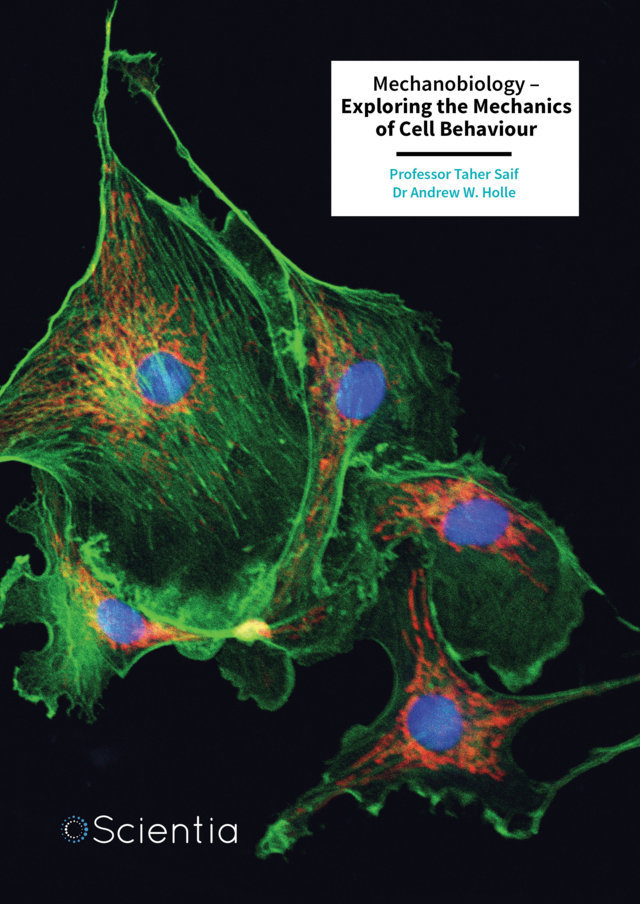Cancer is a daunting healthcare challenge, and is still affecting millions worldwide, despite the enormous research resources that have been directed at finding effective treatments over the past decades. Many anti-cancer treatments remain poorly specific for the tumours they are intended to treat, and often suffer from modest efficacy and serious off-target effects. Part of the problem is the inherent variability between many tumours and their resulting unpredictable responses to standard chemotherapy. However, the latest advancements in precision oncology may be the start of a new paradigm, potentially providing targeted therapeutic payloads that can successfully address the specific and unique issues underlying a given patient’s cancer. Researchers such as Prof. Diana Jaalouk and her colleagues at the American University of Beirut in Lebanon are pioneering innovative tools that are changing the way we understand and treat this complex disease. Two remarkable recent technologies, CRISPR-Cas9 and PROteolysis TArgeting Chimeras (or PROTACs for short), are at the forefront of this precision revolution. While distinct in their approach, these tools share a common goal: targeting cancer with precision and minimizing harm to healthy cells. Together, they are set to reshape the therapeutic landscape. More
CRISPR-Cas9 is often likened to molecular scissors, and allows scientists to edit DNA with unprecedented accuracy. Originally discovered as a bacterial defense mechanism, this technology has been adapted for human applications, including cancer treatment. By targeting specific genes, CRISPR can either deactivate harmful mutations or enhance the activity of tumour-suppressing genes. For example, it has shown promise in tackling mutations in genes such as KRAS, a key driver in lung cancer, and TP53, a common mutation in breast cancer.
What makes CRISPR particularly exciting is its versatility. This tool isn’t just useful for editing harmful genes. It’s also a powerful enabler of immunotherapy treatments that boost the body’s own immune system to combat cancer. Scientists have engineered immune cells, such as T-cells, to better recognize and attack tumours. These engineered cells are already being tested in clinical trials, offering promising results. For instance, CRISPR-mediated PD-1 gene knockout, a method used to make T-cells more effective against cancer, has demonstrated safety and feasibility in early trials involving non-small-cell lung cancer patients. Though challenges remain, the potential to unleash the immune system’s full power against cancer is immense.
While CRISPR works at the genetic level, PROTACs operate on the proteins that genes produce. Proteins are the molecular machines of the cell, and when they malfunction, they can drive cancer progression. PROTACs act as a “cleanup crew,” selectively tagging harmful proteins for destruction by the cell’s natural waste disposal system.
This approach is especially powerful because it targets proteins that were previously considered “undruggable.” For example, BRD4, a protein linked to aggressive cancers such as leukemia, has been effectively degraded using a PROTAC called dBET1. In laboratory studies, dBET1 reduced BRD4 levels by over 85%, halting the growth of cancer cells. In animal models, it showed significant tumor shrinkage with minimal side effects. PROTACs are also making strides in treating prostate and breast cancers by targeting hormone receptors and resistant mutations that evade traditional treatments.
Another advantage of PROTACs is their ability to work at low doses. Traditional cancer drugs often require high concentrations to be effective, increasing the risk of side effects. PROTACs, by contrast, are event-driven, meaning that they degrade their targets entirely, eliminating the need for constant drug presence. This approach reduces toxicity and enhances patient quality of life.
A particularly exciting aspect of these technologies lies in their potential synergy. CRISPR can edit the genes responsible for producing problematic proteins, while PROTACs can degrade those that slip through the cracks. This one-two punch could revolutionize how we approach treatment-resistant cancers and minimize the risk of recurrence.
Prof. Jaalouk and her team emphasize that these tools are not competitors but complementary strategies. By tailoring treatments to the specific genetic and molecular makeup of each tumour, they envision a future where precision oncology is the norm, not the exception.
Despite their promise, CRISPR and PROTACs face significant hurdles. One major concern is off-target effects. For CRISPR, this means unintended edits to healthy genes, which could lead to harmful consequences. In the case of PROTACs, the challenge lies in ensuring that only the desired proteins are targeted for degradation. Advances in computational tools are helping researchers to design molecules with greater specificity, but there is still work to be done.
Delivery is another challenge. Getting delicate CRISPR components or PROTAC molecules to the right cells without affecting others requires ingenious solutions. Nanoparticles, which can ferry these therapies directly to tumours, and viral vectors, which use modified viruses to deliver CRISPR into cells, are showing promise in addressing this issue.
Finally, both technologies must navigate the immune system. CRISPR and PROTAC treatments can sometimes trigger unwanted immune responses, reducing their effectiveness. Researchers are exploring ways to cloak these therapies from the immune system, ensuring they reach their targets without interference.
The work of Jaalouk and her colleagues exemplifies the incredible progress being made in precision oncology. By harnessing the power of CRISPR and PROTACs, they are not only tackling cancer’s toughest challenges but also paving the way for therapies that are as individualized as the patients they serve.
While there is still much to learn, the results so far are encouraging. CRISPR has demonstrated success in directly editing cancer-related genes and enhancing immune responses, while PROTACs are proving effective in degrading previously untouchable proteins. With continued innovation and collaboration, the dream of turning cancer into a manageable condition, or even curing it altogether, is becoming a reality.







